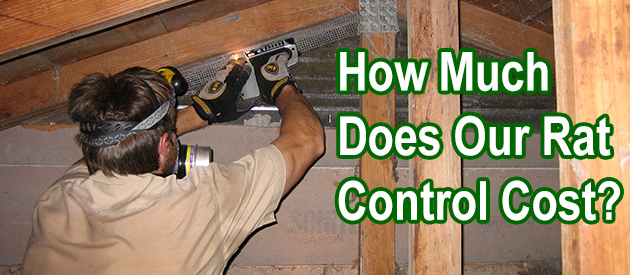Montgomery County, Philadelphia Rat Control Situation:
Hi, I have read your website and am hopeful you can provide me with some direction. I seem to have rats around my house. I see their holes along the side of house (under the front windows, not far from my porch). I don't see any evidence of them being under the porch, only holes along the sidewalk and under the window. Problem is I don't have any food for them. A year ago I paid to have someone come out. He put down poison. Now they are back. I have tried on my own to kill them with poison and gas flares, but I still see small holes. Is there anything I can do before they get into my house? This is a brand new house. I lay awake at night afraid they are going to get in. I am scared to death, literally. Is there something I put down? plant ? something? Please please advise. Warm regards, Lisa - Gone crazy. Be back soon.
That sounds more like vole (field mouse) activity. Rats don't really dig holes.
Thank you for responding. Do you have a website so I can determine how I located you. I think you might be right. I have done some preliminary research on the internet and I do have soft squishy spots in my lawn. One the rain has gone I will go and check if these are holes. Also, I lost most of my tulips I planted.
Contact A Wildlife Pro for excellent wild animal control, wildlife trappers, and rodent removal in Philadelphia.
Hi David, I live out in Bryn Mawr, PA and I need a trustworthy service to come to my home and help me with a living creature, I think it's a rat, in my attic. I have been speaking with many services and they all sound like they all want tons of MONEY to deal with this. I am very skeptical and need honest advice. Can you refer me to the right source, and someone who is not a THIEF and simply wants to charge a reasonable professional for fee for servicing my home. Thanks, Fern
Philadelphia Rat Control Tip of The Week
How Can I Get Rid Of A Rat In My Bedroom?
Fill In Gaps And Cracks:
It's likely that there could be areas across your bedroom where rats can easily enter into your home. This could mean filling in cracks and gaps along the baseboard of your room or at the top of your room where the ceiling meets it. Filling in these gaps and cracks will make sure that a rat cannot enter and leave freely.
Remove Food:
If you regularly keep old plates and food in your bedroom it is important to remove these items and clean up your room as quickly as possible. More areas for rats to hide and more food sources will make sure that a rat will continually go back to that room.
Trim Overhanging Branches:
If you have branches that overhang to a window in your bedroom or hang close to the roof of your bedroom, you should trim them back as this can be a perfect way that rats can access your property.
Set Traps That Are Not Dangerous To Pets:
It's likely that you still want to have your pets in your bedroom so you will need to use a trap that is safe for your room and that will also be widely effective at catching rats. Making sure that you are using a safe trap to remove a rat is a great way to capture an animal that has been getting into your bedroom. Rats can spread poison easily so you should never consider using a poison trap, especially in the bedroom.
Remove Nesting Material Often:
If you find nesting material around your bedroom or in the walls, make sure that you are removing it often to discourage rats from breeding and setting up for a long time in your room.


